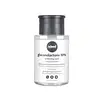What's inside
What's inside
 Key Ingredients
Key Ingredients

 Benefits
Benefits

 Concerns
Concerns

 Ingredients Side-by-side
Ingredients Side-by-side

Water
Skin ConditioningGluconolactone
Skin ConditioningBetaine
HumectantPropanediol
SolventPropylene Glycol
HumectantHumulus Lupulus Extract
AntimicrobialHypericum Perforatum Flower/Leaf/Stem Extract
Skin ConditioningArctium Majus Root Extract
Skin ConditioningSalvia Officinalis Flower/Leaf/Stem Extract
MaskingCalendula Officinalis Flower Extract
MaskingFumaria Officinalis Flower/Leaf/Stem Extract
Skin ConditioningCitrus Limon Flower/Leaf/Stem Extract
MaskingEel Extract
HumectantSodium Benzoate
MaskingTriethanolamine
BufferingEDTA
Water, Gluconolactone, Betaine, Propanediol, Propylene Glycol, Humulus Lupulus Extract, Hypericum Perforatum Flower/Leaf/Stem Extract, Arctium Majus Root Extract, Salvia Officinalis Flower/Leaf/Stem Extract, Calendula Officinalis Flower Extract, Fumaria Officinalis Flower/Leaf/Stem Extract, Citrus Limon Flower/Leaf/Stem Extract, Eel Extract, Sodium Benzoate, Triethanolamine, EDTA
 Reviews
Reviews

Ingredients Explained
These ingredients are found in both products.
Ingredients higher up in an ingredient list are typically present in a larger amount.
Betaine is a common humectant (a substance that promotes retention of moisture). It's known to be gentle on the skin and can help balance hydration.
This ingredient is best for improving hydration and soothing irritated skin. Studies also show it helps even out skin tone.
Fun fact: Betaine is naturally created in the skin and body. The kind found within cosmetic products can be either plant-derived or synthetic.
Another name for betaine is trimethylglycine.
Learn more about BetainePropanediol is an all-star ingredient. It softens, hydrates, and smooths the skin.
It’s often used to:
Propanediol is not likely to cause sensitivity and considered safe to use. It is derived from corn or petroleum with a clear color and no scent.
Learn more about PropanediolSodium Benzoate is a preservative. It's used in both cosmetic and food products to inhibit the growth of mold and bacteria. It is typically produced synthetically.
Both the US FDA and EU Health Committee have approved the use of sodium benzoate. In the US, levels of 0.1% (of the total product) are allowed.
Sodium benzoate works as a preservative by inhibiting the growth of bacteria inside of cells. It prevents the cell from fermenting a type of sugar using an enzyme called phosphofructokinase.
It is the salt of benzoic acid. Foods containing sodium benzoate include soda, salad dressings, condiments, fruit juices, wines, and snack foods.
Studies for using ascorbic acid and sodium benzoate in cosmetics are lacking, especially in skincare routines with multiple steps.
We always recommend speaking with a professional, such as a dermatologist, if you have any concerns.
Learn more about Sodium BenzoateWater. It's the most common cosmetic ingredient of all. You'll usually see it at the top of ingredient lists, meaning that it makes up the largest part of the product.
So why is it so popular? Water most often acts as a solvent - this means that it helps dissolve other ingredients into the formulation.
You'll also recognize water as that liquid we all need to stay alive. If you see this, drink a glass of water. Stay hydrated!
Learn more about Water